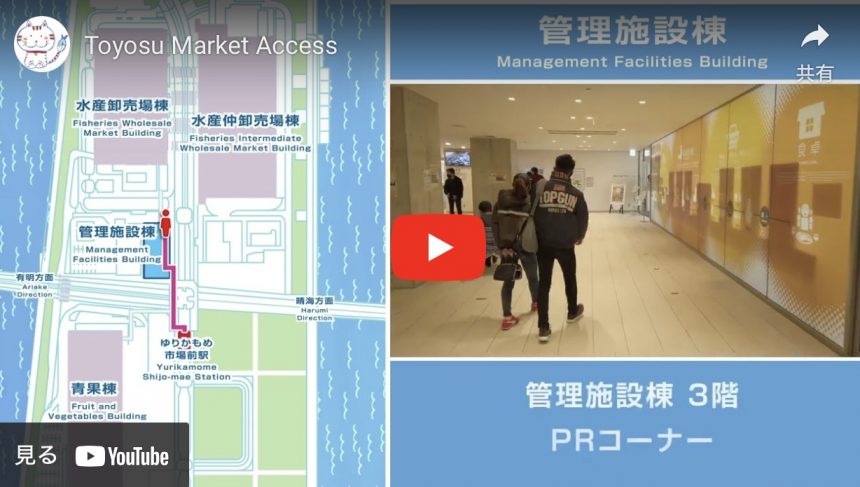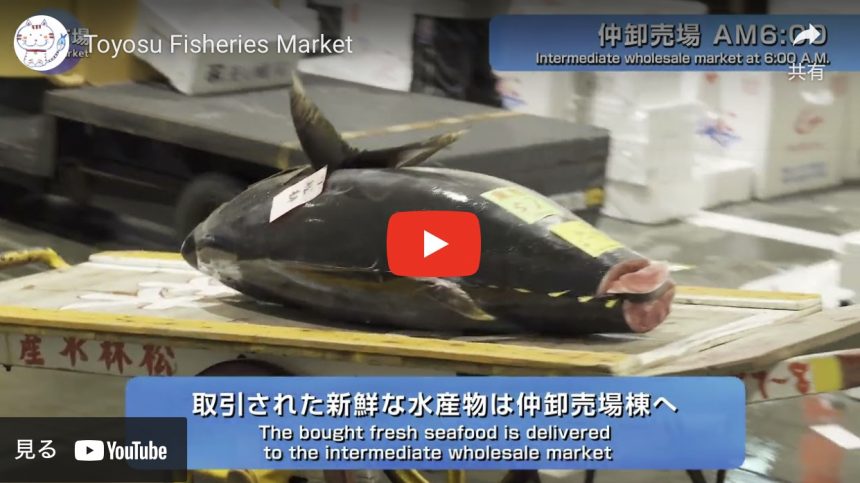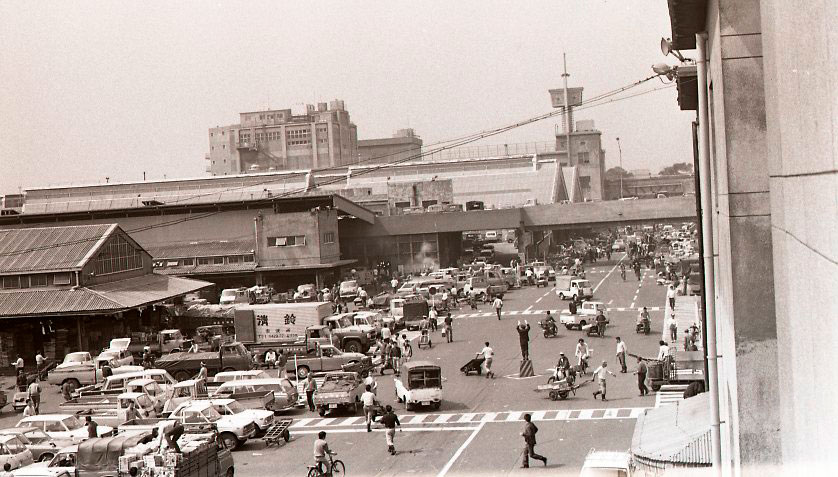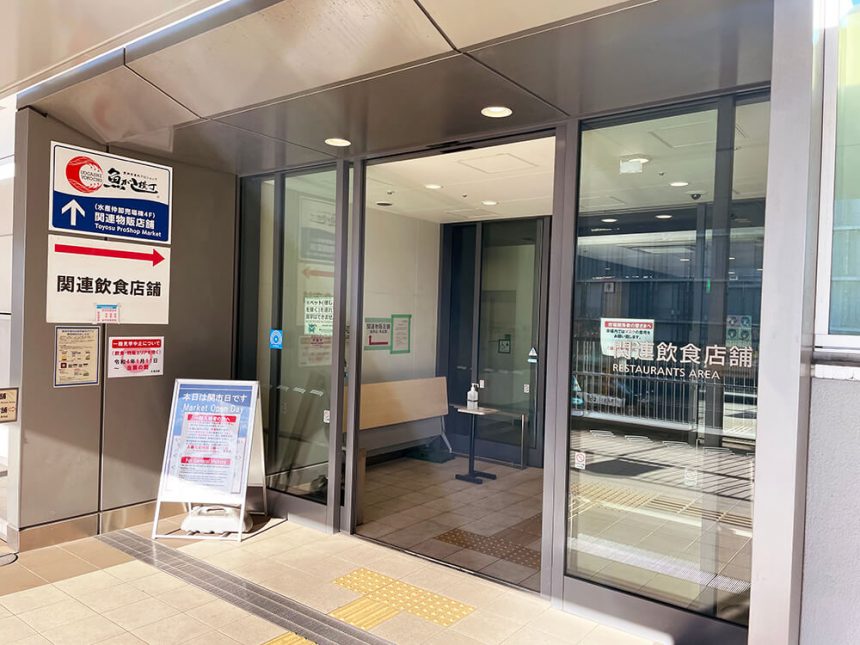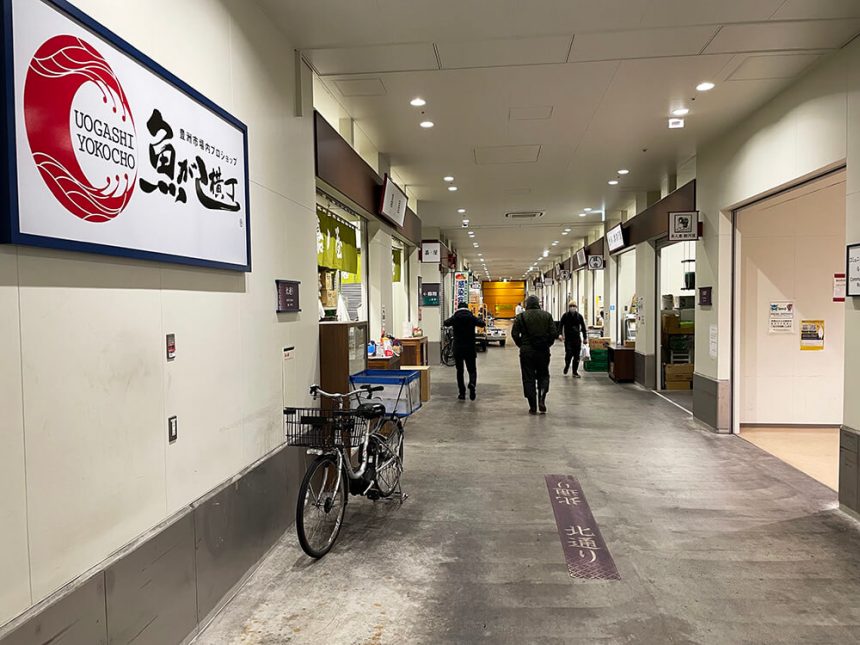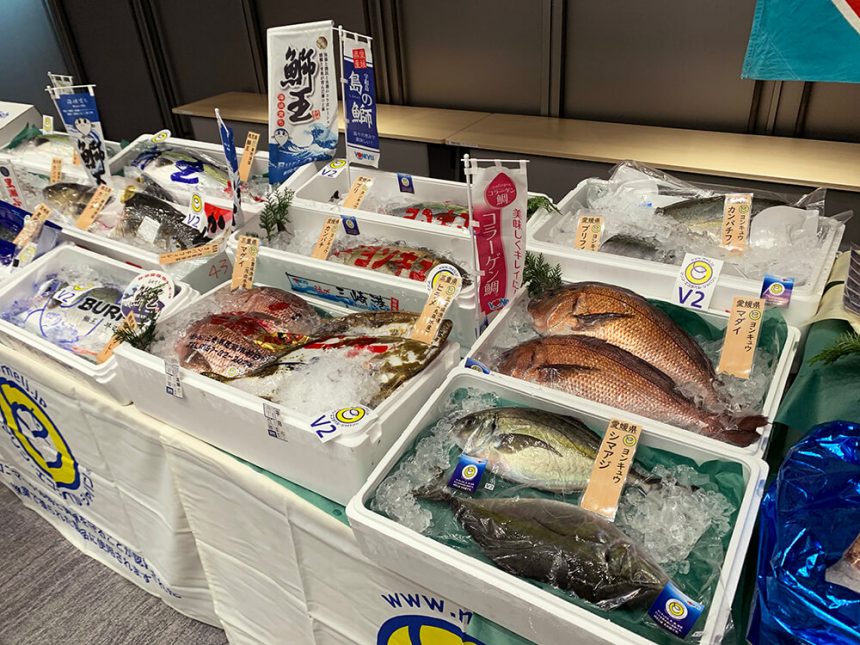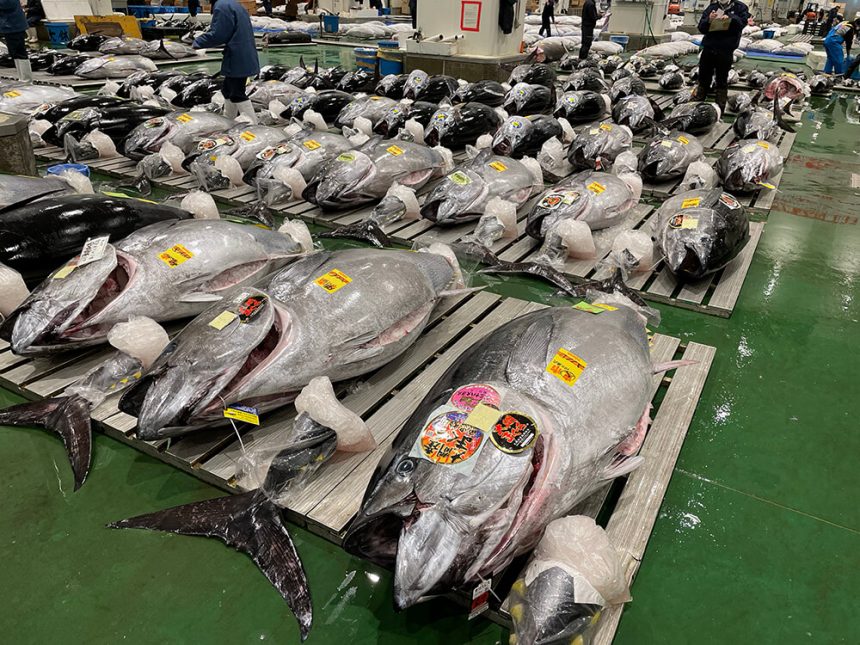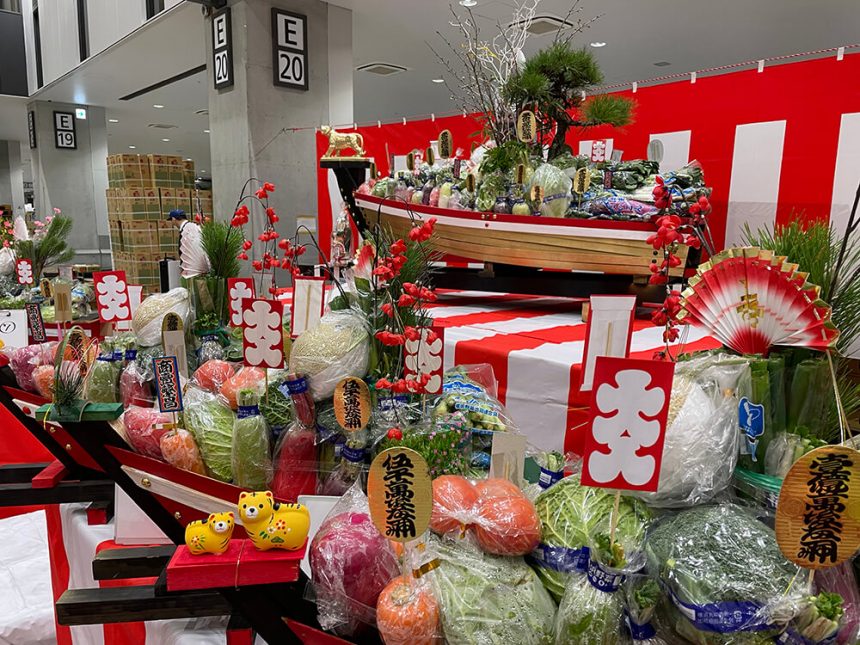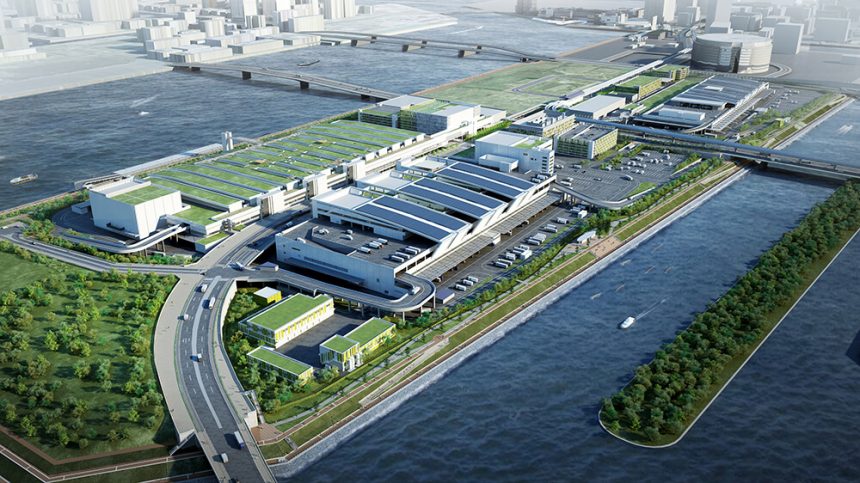
Fisheries Market
- The wholesale market
- The intermediate wholesale market
- Safety first
The seafood trade at Toyosu Market, the largest wholesale fish market in the world, is a tremendous operation. Between 1,400 and 1,700 tons of seafood are sold at the market every day. The market not only supplies more fresh fish than any other wholesale market in Japan and distributes it throughout the country, but it also supports the nation’s fishermen by providing them with a regulated environment to sell their product, and enforces strict hygiene practices to ensure food safety. The Fisheries Market at Toyosu consists of two buildings: the Fisheries Wholesale Market Building and the Fisheries Intermediate Wholesale Market Building.
The wholesale market
The Fisheries Wholesale Market Building is where most of the seafood arrives from suppliers. Here it is received, inspected, and valued by the seven wholesale companies licensed to do business at the market, which then sell the product to intermediate wholesalers and “authorized buyers”—representatives of major supermarket chains and other large retailers who make purchases large enough to remove the need for intermediaries. The Fisheries Wholesale Market Building is also where the market’s famous tuna auctions take place early in the morning. The auction hall is a temperature-controlled facility, and entry is strictly limited to authorized personnel, but visitors can view the action from an observation corridor overlooking the hall and listen to the exchanges between the buyers and sellers through speakers. There is also a smaller observation deck within the temperature-controlled hall itself, where a limited number of visitors, selected by lottery in advance, can get even closer to the bustle of the auction floor.
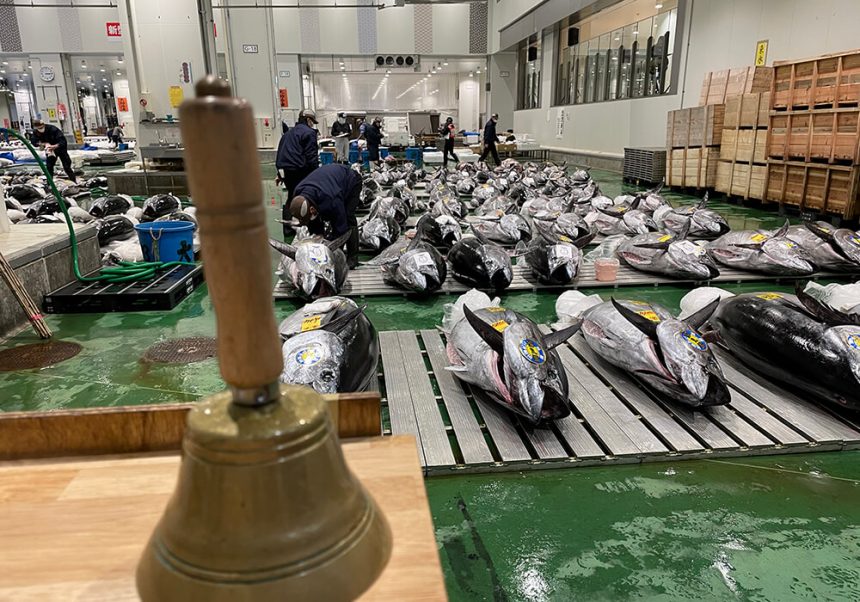
The intermediate wholesale market
The Fisheries Intermediate Wholesale Market Building is the largest structure at Toyosu Market, extending across five floors and 177,000 square meters. This is where seafood professionals such as sushi chefs come to buy their ingredients from the intermediate wholesalers (nakaoroshi) who do business at dedicated stalls on the first floor after the auctions each morning. Each of these middlemen specialize in one or several of the product categories of seafood at Toyosu, such as salted and/or dried fish, large fish (mainly tuna), crustaceans, octopus, and “specialties” (premium seafood used mainly for sushi, including clams and sea urchins). The varieties of seafood purchased and traded by the intermediate wholesalers at any given time are significantly influenced by the season. For example, saltwater eel (anago) and flying squid (surumeika) are popular in summer, whereas in winter, demand for amberjack (hamachi or buri) and scallops reaches its highest point. Visitors passing through the observation halls in the Intermediate Wholesale Market Building can look down on the stalls and view explanatory panels on the walls that list seasonal fish along with photos.
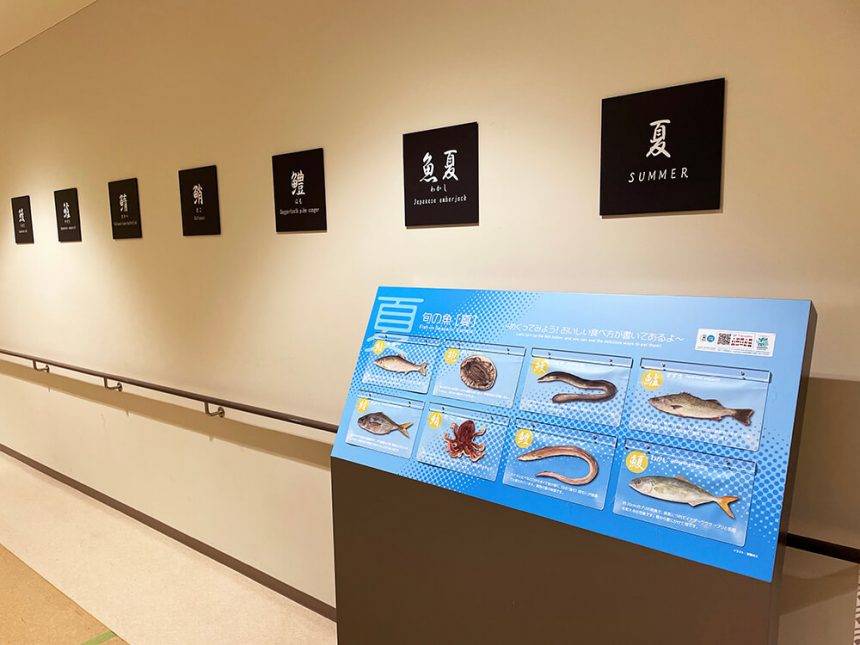
Safety first
Only wholesalers, intermediate wholesalers, and buyers who have been formally approved by the Tokyo Metropolitan Government, which operates the market, are permitted to enter the market area and participate in transactions. This is done to ensure both food safety and orderly operation of the market, and helps keep track of where products come from as well as where they end up.




